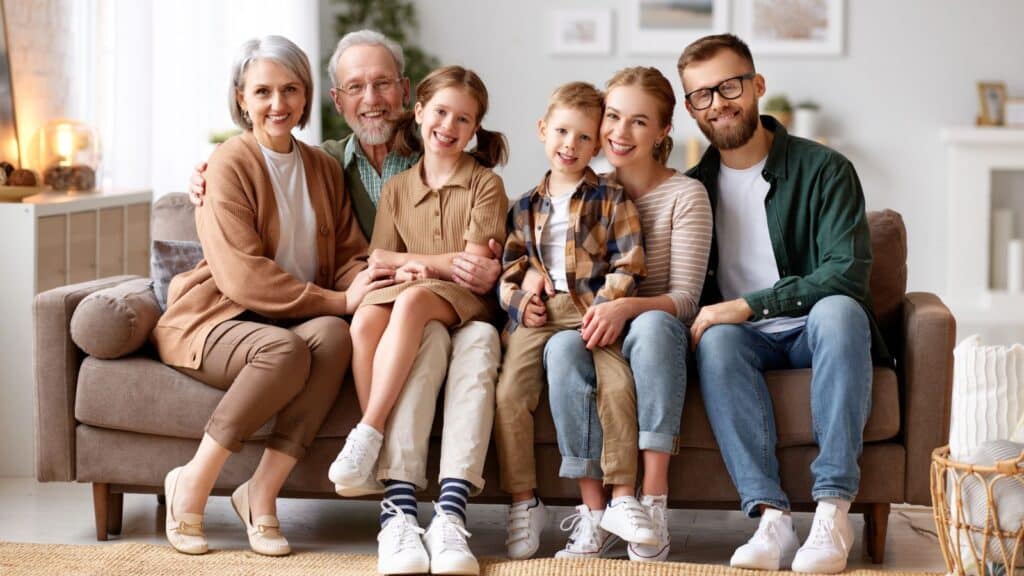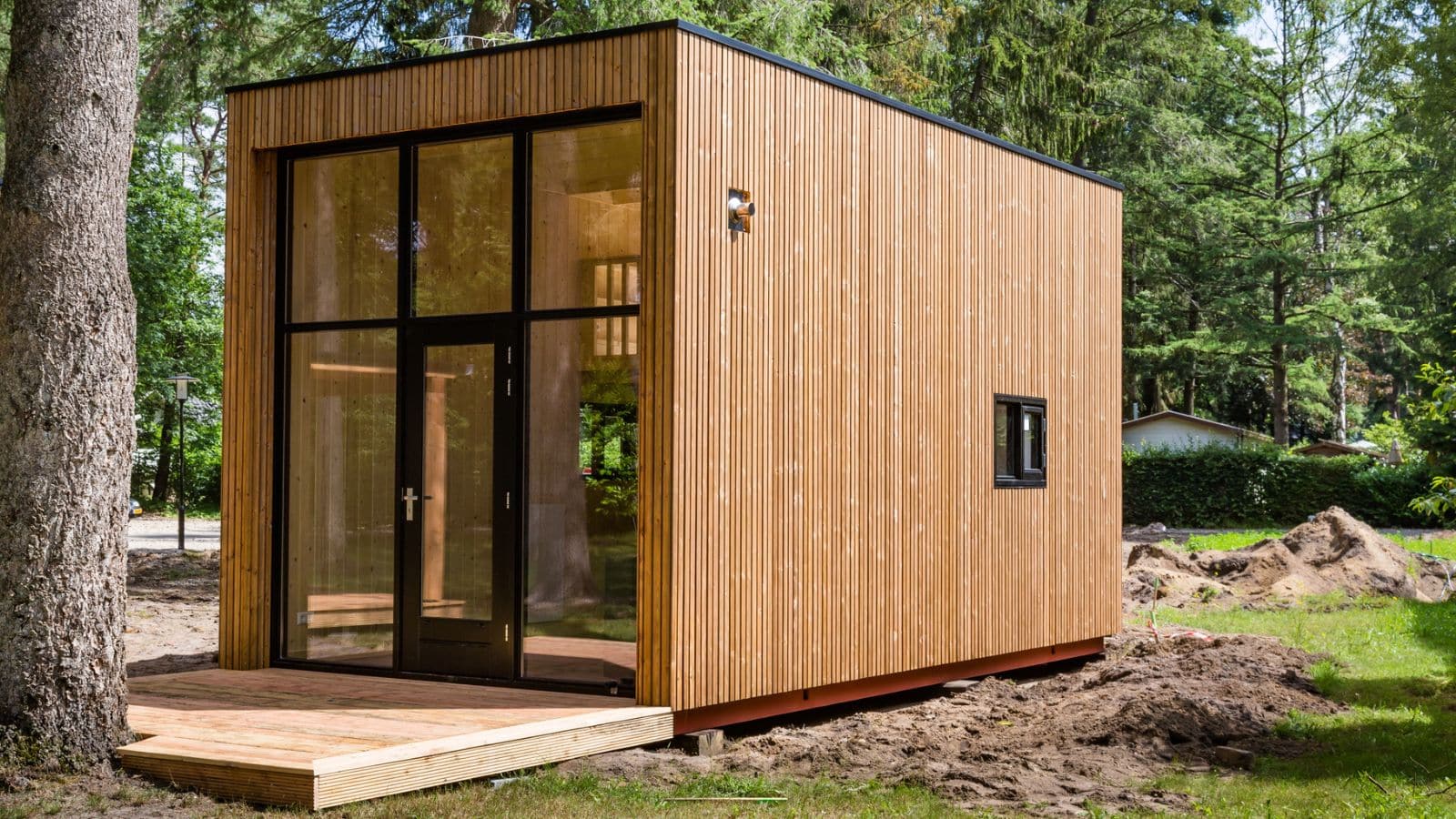The way people think about housing is changing. It’s less about what’s traditional and more about what actually works. Maybe you want less space, a different setup, or just something that fits your day-to-day better. If you’ve been thinking about a change, these housing trends are worth a look.
Tiny Homes Are Gaining Popularity

Tiny homes are no longer just a quirky option—they’ve become a legitimate lifestyle choice for many. With the cost of living skyrocketing, more people are downsizing to smaller, more affordable homes. The beauty of tiny living is its simplicity: less stuff to manage, lower utility bills, and an easier, more sustainable lifestyle.
💸 Take Back Control of Your Finances in 2025 💸
Get Instant Access to our free mini course
5 DAYS TO A BETTER BUDGET
If you’re tired of the clutter and maintenance that comes with a large home, a tiny house might be the perfect fit.
Work-from-Home Spaces Are a Must

The work-from-home trend isn’t going anywhere, and many homebuyers are now prioritizing office space in their homes. Whether it’s a dedicated room or a flexible nook in the living room, having a designated space for work has become a must for many people.
The focus is creating an environment that’s productive and separate from your living area. This trend also extends to home offices with built-in desks, good lighting, and noise-canceling setups.
Co-Living Is on the Rise

Co-living spaces are gaining traction, especially in urban areas where people are looking to cut down on costs. Instead of living alone in a pricey apartment, co-living allows individuals to share a house or apartment, splitting rent and utility costs.
This trend makes it easier for people to live in desirable locations while building a sense of community. It’s a great option for young professionals and people looking for an affordable way to live in cities.
Energy Efficiency Takes Priority

As energy prices climb and environmental concerns grow, more homeowners are opting for energy-efficient solutions. From solar panels to energy-saving appliances, making your home more sustainable not only helps the planet but also saves you money in the long run.
Energy-efficient homes are also becoming a selling point, with buyers willing to pay more for homes that have low energy costs.
Smart Home Features Are Standard

Smart homes are no longer a luxury—they’re becoming a standard part of the housing market. From smart thermostats and lighting to security systems and voice-controlled appliances, homeowners are looking for ways to automate their living spaces. These features not only make life easier but also increase energy efficiency and security.
If your home isn’t equipped with smart features yet, you’re missing out on the convenience they offer.
Multi-Generational Living is More Common

More families are choosing to live together under one roof, and it’s not just because of financial strain. Multi-generational living allows families to spend more time together while also sharing responsibilities like childcare and eldercare. In fact, many new homes are being designed with separate living spaces for grandparents, parents, and children.
This trend is also reflected in larger homes with multiple bathrooms, kitchens, and private areas for each family unit.
Suburban Living is Making a Comeback

With remote work allowing more flexibility, people are flocking to suburban areas for more space, better schools, and a slower pace of life. Many city dwellers are trading in their tiny apartments for larger homes with yards in suburban neighborhoods.
These areas offer a greater sense of community and are often more affordable than urban centers. Whether it’s the appeal of lower housing costs or the need for more space, suburban living is making a strong comeback.
Modular Homes Are the Future

Modular homes are becoming an increasingly popular housing option due to their affordability, speed of construction, and flexibility. These homes are built off-site in a factory and then assembled on location, significantly reducing construction time and costs. Modular homes are also customizable, allowing homeowners to create a space that fits their needs.
As the cost of traditional homebuilding continues to rise, modular homes offer a viable alternative for those looking to buy a home without breaking the bank.
Homes with Outdoor Living Spaces Are in Demand

The desire for outdoor living spaces has skyrocketed, and it’s easy to see why. People are looking to create more usable outdoor areas where they can relax, entertain, and even work. Features like patios, decks, fire pits, and outdoor kitchens are high on homebuyers’ wish lists.
As more people spend time at home, they’re focusing on making their outdoor areas just as comfortable as their indoor spaces. If you have a backyard, now’s the time to make it a place you can enjoy year-round.
The Future of Housing Is Flexible

As lifestyles shift and work habits change, housing needs are becoming more fluid. Flexible living arrangements—whether it’s a space that can be adapted for work, school, or hobbies—are in high demand. People are no longer satisfied with a rigid, one-size-fits-all approach to their homes. Homes that allow for easy customization and adaptability are the future of housing.
Adjusting to Change

Housing is changing, and people are rethinking what home looks like. For some, that means downsizing. For others, it’s about sharing space or finding more flexible options. What matters most is that your home works for your life—not the other way around. These new trends reflect how people actually live today.
The $50 Home Upgrades You’ll Wish You Tried Sooner

Tight budgets don’t mean you can’t improve your home while cutting costs in the future. Plenty of small, cost-efficient changes not only make your space look and feel better but also help reduce energy bills and maintenance expenses. Here are impactful upgrades you can make for $50 or less that deliver long-term savings. The $50 Home Upgrades You’ll Wish You Tried Sooner



